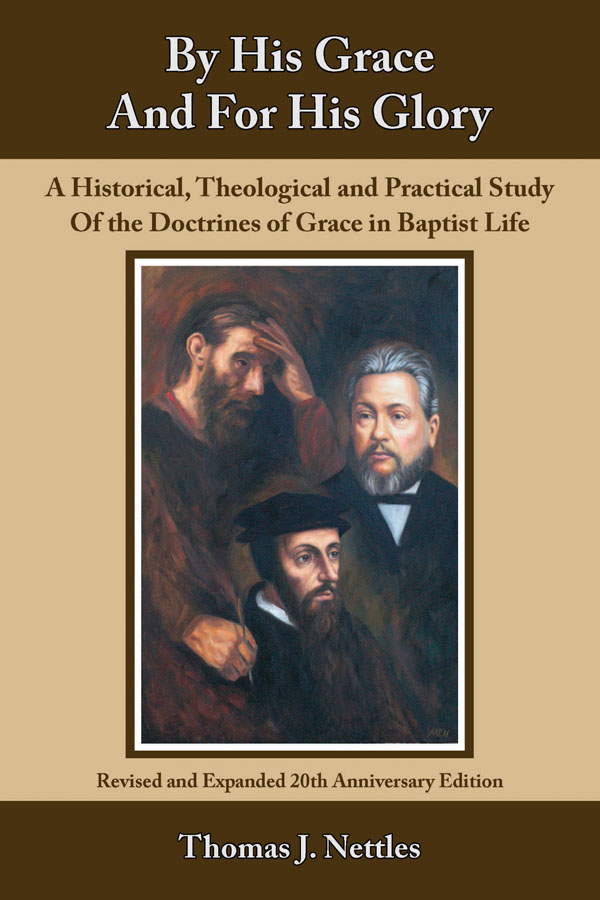Book Review: By His Grace and For His Glory: A Historical, Theological and Practical Study of the Doctrines of Grace in Baptist Life, by Thomas J. Nettles
February 5, 2019

February 5, 2019
“Are you a Calvinist?”
I knew the question would come up, but I didn’t think it would come so quickly. It was the second question I was asked by the pastoral search team of the church I now pastor.
I responded with a clarifying question, “What do you mean by ‘Calvinist?’”
“You know, Calvinists don’t believe in evangelism and missions. They don’t believe you should preach the gospel.”
My response?
“Well, sir, if that’s what you believe a Calvinist to be, then I am certainly not one.”
And yet, I understood where this long-time Baptist was coming from. I’ve heard the argument often, especially in the southern United States. Many falsely believe that to be a Baptist and hold to the doctrines of grace (Calvinism’s more biblical title) is an impossibility. This assumption has been undergirded by the false notion that if you believe the doctrines of grace, then you must be opposed to proclaiming this grace to all freely and without exception.
Over my short time caring for my church I have sought to shepherd them to embrace a biblical understanding of God’s grace. As depraved sinners, we are drawn by the Holy Spirit, justified by Christ’s blood and righteousness, and preserved by God for all eternity. It has been my aim to help them see that these truths are not only biblical, but they’ve also been a deep-rooted conviction of many Baptists throughout the centuries.
This is where Tom Nettles’ book has been a great gift to me—and many other pastors like me.
In By His Grace and for His Glory, Nettles, widely regarded as one of the foremost Baptist historians in America, examines prominent Baptist theologians, pastors, and missionaries throughout the past and how they maintained a rich Calvinistic theology while remaining strongly evangelical in their preaching and desire to reach the nations.
Ultimately, the book shows that not only do the doctrines of grace have a place in Baptist life, but, because of the authority of Scripture and a desire to maintain doctrinal fidelity, those who held to these truths were able to overcome many of the theological errors that troubled their fellow Baptists in centuries past. As Nettles says early on, “The purest biblical presentation of the gospel glides upon the waters of the doctrines of grace. Indeed, any rejection of these doctrines carries within it seeds that sprout into nonevangelical positions” (27).
With that, here are a few more highlights from the book.
The first half of the book is composed of simple, straightforward sketches of Baptists throughout the centuries. Starting with Benjamin Keach and John Bunyan, Nettles lays the foundation for how the earliest Baptists held tightly to the doctrines of grace. From here, he moves through the centuries and highlights Baptists in Europe and the United States of America. Men like Andrew Fuller, John Leland, Adoniram Judson, John L. Dagg, and James P. Boyce all affirmed these doctrines. Throughout these biographies Nettles highlights how their commitment to the doctrines of grace guided their ministries. Ultimately, he shows that many of the best Baptist theologians and pastors were men who saw Scripture to be clear on God’s sovereignty in salvation and fought for these truths with precision and vibrancy.
Perhaps the most helpful section of these theological biographies is Nettles’ assessment of the theological developments that took place in the late 19th and early 20th centuries. During this time, adherence to the doctrines of grace declined in evangelical life. For someone who’s thankful for both doctrinal depth and the cooperation found within the Southern Baptist Convention, this section helped me better understand where our Baptist forefathers stood their ground and where they seemingly went astray.
For these historical sketches alone, the book is worth reading. But Nettles doesn’t stop there.
In the second and third sections of the book, Nettles provides a biblical defense of the doctrines of grace and shows how these doctrines should work themselves out in life and ministry. While his arguments are technical at some points, they’re largely straightforward and deal with each doctrine concisely, answering objections along the way.
How might this book be helpful to pastors today?
First, By His Grace and for His Glory is an instructive resource for pastors as they help others who may misunderstand the historicity or importance of the doctrines of grace in Baptist life. Whether you point to specific individuals like the missionary endeavors of Luther Rice or the educational contributions of Basil Manly (Sr. and Jr.), this book provides compelling evidence that Calvinist Baptists have made rich contributions to evangelism, missions, church planting, and theological education.
Second, Nettles’ work can help pastors and members alike better understand how the doctrines of grace undergird and fuel passionate evangelism and missionary endeavors. By giving example after example, Nettles shows how godly men and women who treasured the doctrines of grace gave themselves to the work of the ministry while also helping readers see how these theological convictions gave rise to and shaped missionary zeal. These godly examples should be a great encouragement to our own faith as they model for us the effect the doctrines of grace should have in our own lives.